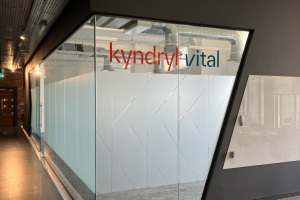Budget 2014: At a glance

WHAT are the key points of this year’s Budget? Here is a brief summary of what has been outlined by Chancellor George Osborne.
Economy
The Office for Budget Responsibility has revised upwards the 2014 growth forecast to 2.7% (from 1.8%).
Growth is then predicted to be 2.3% in 2015/16; 2.6% in 2016/17 and 2.5% in 2017/18.
The UK economy is growing faster than Germany, Japan and the US.
The deficit will be 6.6% this year (2013/14) then 5.5% in 2014/15; 4.2% in 2015/16; 2.4% on 2016/17; 0.8% in 2017/18 and then a surfeit in 2018/19 of 0.2%.
Borrowing of £108bn this year will fall to £95bn in 2014/15; £75bn in 2015/16; £44bn in 2016/17; £17bn in 2017/18; with a surplus of £5bn showing for 2018/19.
Debt as a share of GDP is to fall to 2018/19 in 74.2%.
Inflation target of 2% to stay in place.
Business
Export lending to double to £3bn and interest rates on that lending to be cut by a third.
Business rate discounts and enhanced capital allowances in enterprise zones will be extended for a further three years.
The R&D tax credits rate will increase from 11% to 14.5% for loss making SME businesses. Over the next five years, it is estimated that this increase will support £1.3bn of investment in innovation.
Annual investment tax allowance to double to £500,000 and extended to the end of 2015 from next month.
Manufacturing
A cap on the Carbon Price Support rate at £18 per ton of carbon dioxide from 2016-17 for the rest of the decade, saving a mid-sized manufacturer almost £50,000 on their annual energy bill.
An extension of the existing compensation scheme for energy intensive industries for a further four years to 2019-20.
New compensation worth £1bn to protect energy intensive manufacturers from the rising costs of the Renewable Obligation and the Feed-In Tariffs.
An exemption from the carbon price floor the electricity from Combined Heat and Power plants.
Tax & duties
The limit at which people start paying tax to be raised to £10,500 from next year.
Higher rate tax threshold will rise to £41,865 this year and further to £42,285 next year.
The transferable tax allowance for married couples to increase to £1,050.
Tax on homes owned through a company to be extended from residential properties worth more than £2m to those worth more than £500,000.
Tobacco will have a 2% above inflation rise and will be extended for the rest of the next parliament.
A scrap in the escalator for all alcohol – it will rise with inflation with the exception of Scottish Whisky, which will be frozen and ordinary cider, whilst beer duty will be cut with 1p off a pint for the second year running.
Bingo duty to be halved to 10% whilst fixed odds betting terminals increased to £25 and horse race betting levies extended to those based offshore.
Property
Help to Buy equity loan scheme extended to 2020.
Support for building of more than 200,000 new homes.
£140m extra for flood defence repairs and maintenance.
£200m pot for local authority bids to fix potholes.
Savings
ISA annual savings limit of £15,000 for newly combined cash and/or shares ISAs.
Junior ISA limit to increase to £4,000.
Abolition of 10p rate for savings.
Premium bond allowances to increase from £30,000 to £40,000 this year and then £50,000 next year with a doubling in the number of £1m winners.
Pensions
Tax restrictions on pensioners’ access to their pension pots to be removed with no requirement to buy an annuity.
Taxable part of pension pot taken as cash on retirement to be charged at 25%, down from 55%.
Increase in total pension savings people can take as a lump sum to £30,000.
New Pensioner Bond through National Savings & Investments available from January, with rates of 2.8% for one-year bond and 4% for three-year bond – up to £10,000 to be saved in each bond.
Other
Proceeds of Libor banking fines to continue to be given to military charities and extended to lifeboat charities, scout and cadets.








